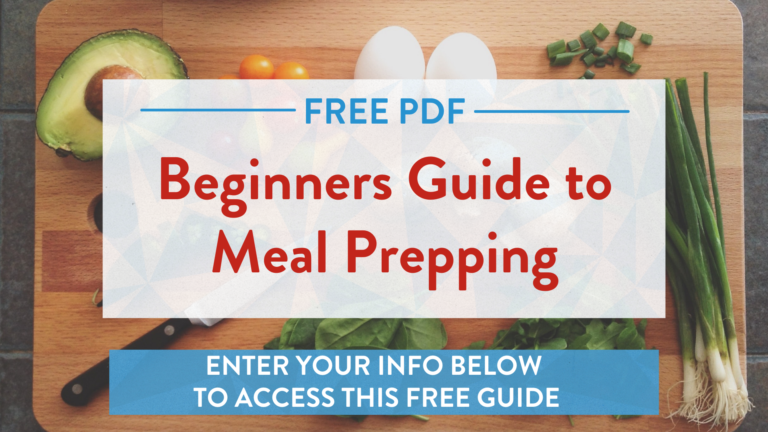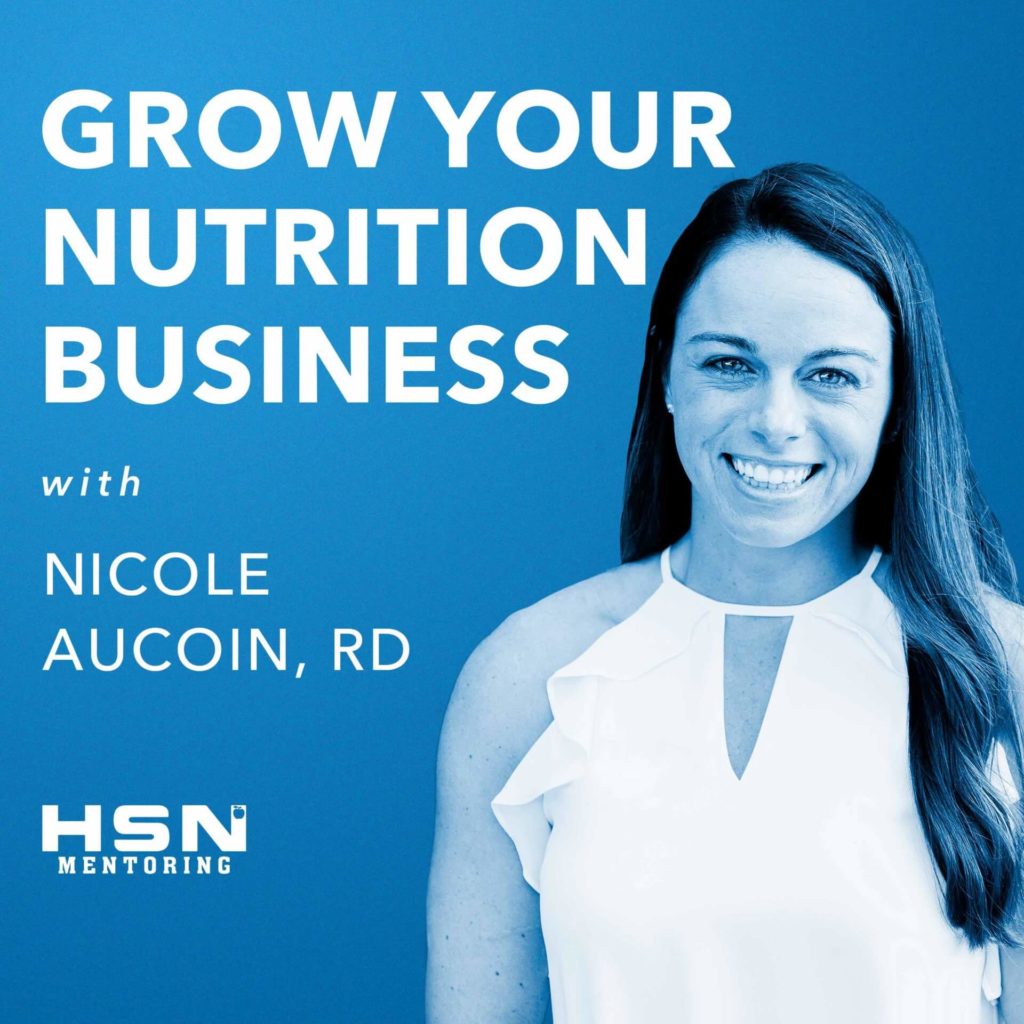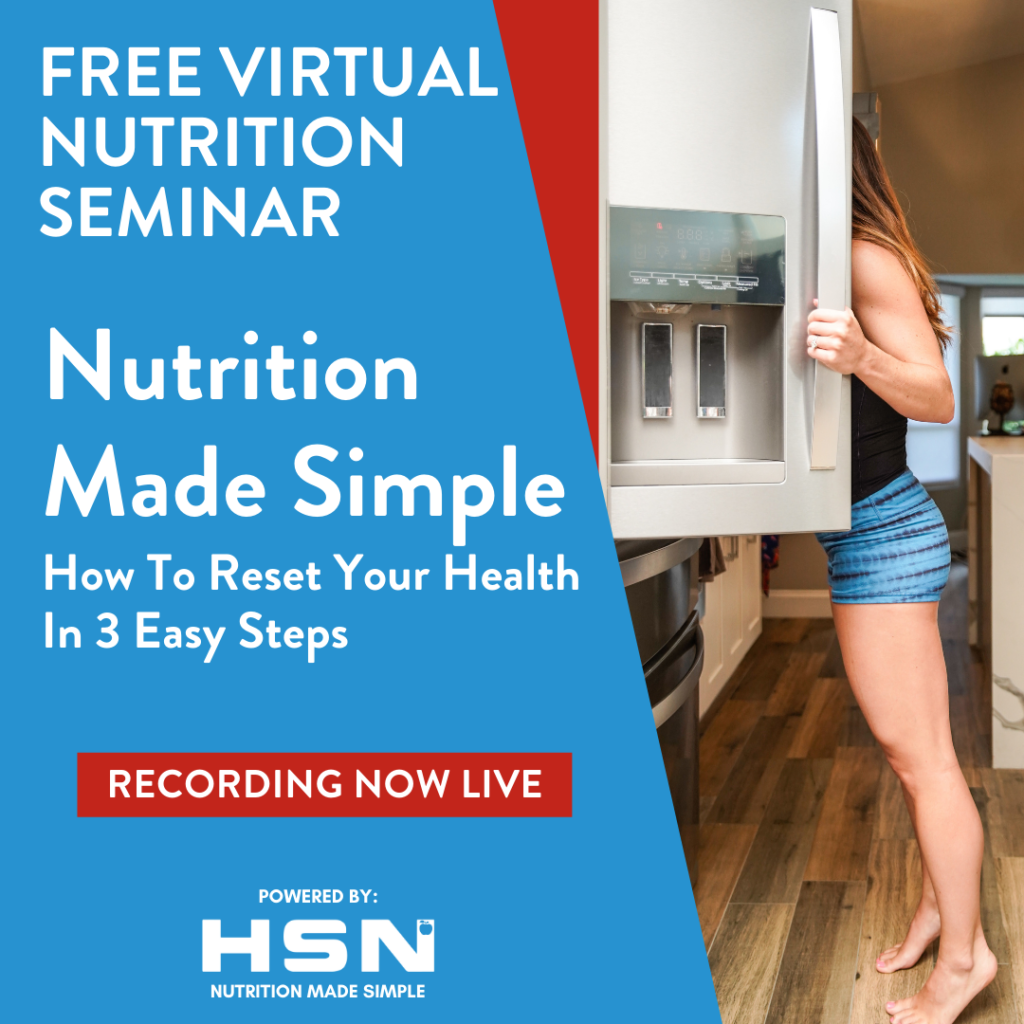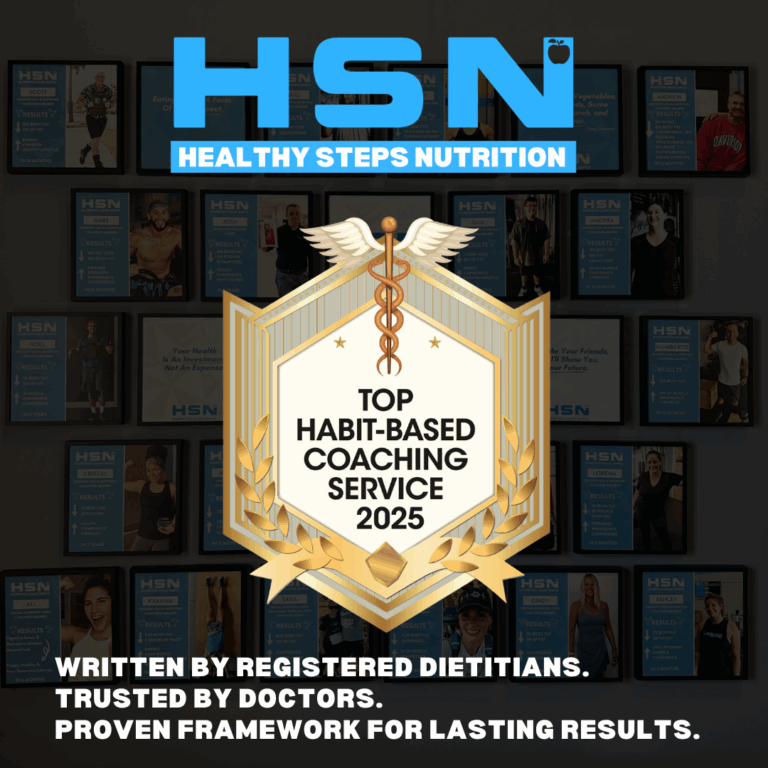Do you struggle with stress or boredom eating? If so, this podcast episode is for you!
Ashley Osterman and Nicole Aucoin discuss how to manage triggers. We share a tool that we use with our Healthy Steps Nutrition clients, called the Trigger Workflow.
Please don’t forget to rate, leave a review and subscribe to this podcast!
Understanding The Trigger Workflow
WHAT HAPPENED LEADING UP TO THE EVENT?
Common triggers to identify:
You skipped meals, now you over hungry and hangry
You are stressed
You are in a situation you don’t feel comfortable with
You are overwhelmed and emotions are high and you are looking to food as comfort
WHO WERE YOU WITH DURING THE EVENT?
Were you by yourself?
Were you around specific people that tend to trigger you?
HOW WERE YOU FEELING BEFORE THE EVENT?
Were you stressed? What were your emotions like?
Identify the feeling you had, especially if it’s out of the normal type of feeling for you.
HOW DID YOU FEEL AFTER THE EVENT?
Did you feel well?
Were you tired?
How well did you sleep after the event?
How did you feel the next morning?
WHAT PATTERNS DO YOU RECOGNIZE?
How can you manage your emotions in a more productive way?
Are you surrounding yourself with people that are a positive or negative influence that can hold you accountable?
WHAT ACTIONS WILL YOU TAKE TO MANAGE THE TRIGGER NEXT TIME YOU'RE PRESENTED WITH IT?
What could you have done differently?
Make sure that you’re actually looking through this workflow and looking internally to actually deal with the emotion, stress or whatever it is that’s underneath that triggers you.
ADDITIONAL PODCAST EPISODES TO LISTEN TO
LISTEN: CrossFit, Nutrition & Your Health >>HERE
LISTEN: Nutrition, Hormones & Your Health >>HERE
LISTEN: The Why Behind Healthy Steps Nutrition >>HERE
LISTEN: Grow Your Nutrition Business Podcast – Inside The Nutrition Program At CrossFit Brighton & How Nutrition Coach, Darcie Helped Brent Lose 100 Pounds >>HERE

ARE YOU A GYM OWNER OR NUTRITION COACH?

You don’t want to miss the Grow Your Nutrition Business Podcast!
Every week, we provide simple and actionable tips to help gym owners and coaches build a wildly successful nutrition program.
Listen now!
INTRODUCING HIREANUTRITIONCOACH.COM
In this directory, you will find a list of the nutrition coaches and dietitians that use our program, written and overseen by dietitians.
These coaches have gone through coaches evaluations, have ongoing mentoring calls with our experts, and have been nutrition coaching using HSN for a minimum of four months.
Click the link below to find a nutrition coach near you!
Episode Transcript:
Nicole Aucoin (00:03):
Welcome back to The Nutrition Made Simple Podcast. At Healthy Steps, Nutrition, we believe something as fundamental as nutrition shouldn’t be complicated, which is why we focus on a simple, habit based approach when working with clients. I’m your host, Nicole Aucoin, registered dietitian and founder of Healthy Steps Nutrition, Grassfed HSN and HSN Mentoring. I’m also the author of The Healthy Kids Cookbook. 100% kid approved recipes the entire family will love. You can find it on Amazon, or if you click the link in the show notes, you will find a copy to purchase today. In this podcast, we will be teaching you how to take one step at a time to becoming the healthiest version of yourself.
Nicole Aucoin (00:51):
Today, Ashley, our director of nutrition education at Healthy Steps Nutrition, and I talk about triggers. Triggers is defined as an event or situation that causes something to start. Food is so much more for many people. We use food to cope with stress, we use food as comfort and we eat when we’re bored, we mindlessly eat doing other activities. I think most of us can think of a situation where at the end of it, we think, oh man, I overdid it. I get it. We’ve all been there. But in this podcast, Ashley and I discuss a trigger workflow that we use with our clients to help them understand how to deal with triggers, manage them so that the next time the same situation happens because it will happen again, you can handle it in a more positive light. We give an example of something that actually happened with one of our clients throughout the entire workflow so you understand how to apply it. We will get to this episode right after this message.
Nicole Aucoin (02:04):
Do you know someone that is looking to get healthy and is unsure where to start? There are so many different diets out there and people are so confused and overwhelmed at which diet is right for them. At Healthy Steps Nutrition we focus on a holistic approach. It’s not just about giving you a meal plan or a diet. It’s really teaching you how to create a healthy lifestyle that looks at eating whole foods and stress management, how your sleep affects what you eat, your support system, exercise, all culminating to this healthy lifestyle. And we’d love for you to share this podcast with them because every single week we give you free help to help you become the healthiest version of yourself. So all you need to do is take a screenshot, post this podcast on social media, please don’t forget to tag at Healthy Steps Nutrition so your friends can find more of our awesome free help. Also, please, don’t forget to subscribe to this podcast so that you don’t miss another episode. Enjoy this episode with Ashley and I on triggers.
Nicole Aucoin (03:14):
Ashley, welcome back to the Nutrition Made Simple Podcast.
Ashley Osterman (03:18):
Hey Nicole, thanks for having me.
Nicole Aucoin (03:20):
Today, we are talking about triggers and you know, what are triggers? What do we define them as in relation to health and wellness and nutrition?
Ashley Osterman (03:31):
Yeah, I think it’s so important to be able to identify and understand triggers because this helps us become more aware and we look at triggers, it’s something that involves a strong emotional response. So a trigger could be anything as simple as driving on the freeway and somebody cuts you off and honks at you and you get a little bit frustrated and upset. Or a trigger could be something like I’m a little bit stressed out, I’ve had meetings back to back today and I finally get a break and all I want to do is open the cabinet and eat the cookies.
Nicole Aucoin (04:05):
And I think it’s important to understand, like what are the triggers that you have? What trigger foods do you have? Like, do you tend to have this one food that you will over-consume if it’s in the house or in the pantry? Or if you are stressed, do you do something that’s a trigger and causes you to derail your progress? At the end of the day, like we’re thinking about triggers, it’s identifying what situations happen that cause you to be inconsistent to help you reach your end goal.
Ashley Osterman (04:33):
Yeah, absolutely.
Nicole Aucoin (04:34):
So personal example, and I’m sure we all have triggers, like we all have things that we’re like, I don’t know that this is the best option to keep in front of me because eventually I’m going to say, I want this and I’m going to over-consume on whatever that thing is. For my husband, it’s M&Ms, he really loves M&Ms and he will, if there’s a bag in the house tend to over-consume on that. For me, it’s Teddy Grahams, those chocolate Teddy Grahams are so delicious and it’s addicting. And we know physiologically sugar plus fat is addicting, but I can tell you from personal experience, I over-consume any time chocolate Teddy Grahams are in the house. And I know it happens, but in a moment of weakness at the grocery store, if I go hungry, I will find myself in front of the Teddy Grahams. I’m like, yeah, it’s fine. I won’t over-consume. And then every time it happens that I do. So what are some things?
Nicole Aucoin (05:25):
Well, no one else in the house has this problem. And no one else loves Teddy Grahams as much as I do. So we try not to keep them in the house.
Ashley Osterman (05:32):
Yeah. So removing that trigger, that moment of weakness, food from the house is really a good strategy for you to keep it so that you don’t go through a box of Teddy Grahams tonight.
Nicole Aucoin (05:43):
And I think for every person, it’s a little bit different, but how you come up and figure out, okay, what is the trigger and how do I manage it? Is the same process.
Ashley Osterman (05:55):
Yeah, absolutely. So the first step really is identifying and understanding the trigger because this helps us become more aware of why it’s occurring. And when we’re more aware, we can begin to take responsibility for the way that we manage the triggers and then ultimately avoid letting them control us.
Nicole Aucoin (06:14):
So let’s talk about some common triggers. One, I think is people like leading up to the event, maybe they skip meals and then they’re like over hungry. They get to the point where they’re hangry. I mean, that’s like a common one. Another one is stress. Like we are super stressed with work and they’re struggling, and then we have this trigger. Or they’re in a situation that they don’t really feel comfortable with. And then we end up getting this trigger. Or we’re just like mindlessly eating.
Ashley Osterman (06:42):
Yeah. Just not paying attention. Absolutely. Emotion. Emotional is another one I hear a lot with some clients, something gets a little bit too overwhelming. Emotions are high and they look for comfort and food.
Nicole Aucoin (06:54):
At the end of the day, when you’re doing this trigger workflow, when we’re looking at okay, what happened in the event. Sometimes you’ll end up seeing common similarities with other triggers that you might have.
Ashley Osterman (07:07):
Of course. And it can extend beyond just food.
Nicole Aucoin (07:11):
It’s interesting. So, the first step. What happened leading up to the event? So I’m going to go through an example that I had with one of my clients. And we’ll basically use him as an entire example throughout this whole workflow that we’re going to go through. So he was with his family and they went to Universal and they were walking around Universal all day and he ended up over-consuming at Universal because they were walking around and he didn’t kind of plan ahead with food. And leading up to that event, he hadn’t eaten for hours and hours. So he’s really hungry. He’s walking around, everyone’s cranky. And I don’t know about you, but like going vacations with your kids is not really a true vacation. It’s kind of like a work-cation or a trip.
Nicole Aucoin (07:59):
So he’s having a good time, but everyone’s kind of stressed out. He had gone extended periods of time. He’s gotten to a point where he’s hangry.
Ashley Osterman (08:08):
So first step in the trigger workflow, what happened leading up to the event? So he’s on vacation with his family, not eating for a long period of time and maybe a little bit stressed out, which brings us to the second part of the trigger workflow. Who were you with during the event? So we know your client was with his family, kids, wife, I’m assuming. But this is important too, because sometimes we’ll have people who use this workflow and realize triggers tend to happen when they’re around specific people.
Nicole Aucoin (08:37):
Or the opposite. When they’re by themselves. So figuring out who are you around? And I think this one, you’re right. You do tend to find trends with this one.
Ashley Osterman (08:49):
So third step on the trigger workflow. How were you feeling before the event?
Nicole Aucoin (08:56):
And I think, so in this situation, he’s feeling kind of hangry and stressed out. But a lot of times you find like the emotion is not your normal state of emotion, when you have a trigger. Like you’re going to be stressed, you’ve got a moment of weakness and it ends up causing you to do something that you wouldn’t normally do.
Ashley Osterman (09:15):
Absolutely. So really identifying the feeling, especially if it’s out of that normal feeling that you have. And then again, being able to start understanding and identifying common threads.
Ashley Osterman (09:25):
The next step, number four in our trigger workflow is how did you feel after the event?
Nicole Aucoin (09:32):
This is an interesting one because when you start really diving into, how did you feel after the event, you help the client come to the conclusion that they don’t actually like doing it. And this, I think question is probably the most important question that you can help, like you can help yourself with.
Ashley Osterman (09:54):
Yeah. Because you really don’t always make that connection. Like how your choices then make you feel a certain way. We don’t always put the two and two together. And when I ask this question, I like to ask it and then just be completely silent. I want you to think about it for a few minutes. Like really think about how did you feel after the triggering event?
Nicole Aucoin (10:18):
I think a lot of times people don’t associate how they feel with what they eat. And when you really just start thinking about and replaying the event, you can realize, I actually didn’t feel well. I got really tired or I didn’t sleep well after the event. So let’s give, in this example, he didn’t feel well. He felt crappy. He had a stomach ache. He did not feel well. He said, I almost felt like I was going to throw up after the event because my body wasn’t used to having all that at one time. I think another example, and Jason and I did that continuous glucose monitoring experiment. And he used to over-consume on cookies at night or just sugar in general at night. And he’s definitely gotten better over the years, but that continuous glucose monitoring experiment was the turning point for him because he started associating how he slept and how he felt the next morning with what he ate.
Nicole Aucoin (11:10):
Like we saw his blood sugar go up at night and it stayed up all night and he’d started associating that with not sleeping well. And his blood sugar was up when he woke up in the morning and that was the turning point. He stopped eating sugar at night because how he felt after the event was more important to him than the actual thing that he was doing.
Ashley Osterman (11:31):
That is definitely mind opening for so many people. Because again, they don’t make that association. So I think that’s so important to focus on and really give someone time to think about this question when we’re working through the trigger workflow.
Ashley Osterman (11:47):
The next question, question number five, as we’re going through the workflow is what patterns do you recognize?
Nicole Aucoin (11:54):
So I think when you’re thinking about a situation that happened, that caused you to react in a way that you wouldn’t normally react or go off of the progress or derail the steps that usually take, you need to think about your emotion before. How do you manage that emotion in a more productive way? Are you surrounding yourself with people that are that positive or negative influence that can kind of hold you accountable? And really thinking, okay, how do you feel after you do that? And most of the time people can say, well, I don’t feel well after I do a certain thing. And I know when you start eating healthy and eating healthy consistently, and you have more sugar, your stomach starts, like your stomach hurts when you have too much sugar at one time.
Ashley Osterman (12:42):
Oh yeah. I have clients tell me all the time after they start eating healthier, incorporating more whole foods and half plate veggies into their diet. And they do have that fall off or that indulgent day that they really feel the negative effects of eating something that they now typically don’t eat. And they start to make that association. I think when you start eating more healthy consistently, your body starts to fine tune into things. And you’re able to actually differentiate the feelings way more than if you were just eating a typical American diet.
Nicole Aucoin (13:14):
And the thing is, is most people don’t even know how their body, how they’re intended to feel.
Ashley Osterman (13:20):
This is so true.
Nicole Aucoin (13:21):
Like you don’t even realize how well you’re supposed to feel because you’re so used to eating a certain way and thinking like, that’s how I feel. Like that’s my energy level and that’s just normal for me. Versus if you started eating healthy and drinking more water and getting enough sleep and exercising and all of the things that we talk about at healthy Steps Nutrition, you would start feeling better, and you would start managing your stress better and then these triggers wouldn’t happen in the first place.
Ashley Osterman (13:47):
Yeah. You said most people don’t know how good they would feel. I’m like how good you could feel. You could feel so well. Like you could feel amazing. Amazing. And typically that’s the first thing I hear back from nutrition clients when they do start eating healthier and living a more consistent, healthy lifestyles. Man, I didn’t even know I could have this much energy or feel this great, or be able to keep up with my kids or whatever it might be. But yeah, making sure that we talk about what patterns you’re recognizing and identifying them. But once you’ve identified those triggers, we talk through how we feel after, we’ve figured out what is actually causing us to go off track. You might think, well, okay, cool, easy. Now I have to do just avoid those situations. No worries. I found out that triggers me like your client. Not going to Universal anymore. No, that’s not what we want to do. It’s really not that simple. You can’t avoid or escape from every difficult situation in life.
Ashley Osterman (14:44):
So we need to look at now figuring out a plan, which takes us to step number six. What actions will you take to manage the trigger next time you’re presented with it?
Nicole Aucoin (14:57):
Now, I think this is an interesting thing. Because as a client, you need to be thinking of this yourself. Like yes, a coach might be able to help you, but at the end of the day, you’re living your life. It has to be your decision that you want to do something. So if it’s Universal, what could he have done differently? Well, we talked about having a balanced breakfast. We talked about packing some balanced snacks, so he never gets the point that he’s super, super hangry.
Nicole Aucoin (15:26):
For me with the Teddy Grahams, like I know it’s a trigger food. Like why would I even have it in the house? Because I know that it’s going to cause me to over eat. And sometimes I do get it in the house. And what happens then is I make sure that I’m not digging my hand in the box. I’m taking a portion and I’m putting it in a bowl and then walking away from the box. And then I’m coming over here and sitting down and getting away from the box because it’s so easy when you’re standing in the kitchen, I think with like chips in those salty foods that are super savory. It’s easy to just keep digging in and over-consume.
Ashley Osterman (15:58):
Yeah just mindfully over consuming. You don’t even realize it until you’re at that point where like, oh man, the box or the bag is empty. And then you’re feeling real bad about 10, 15 minutes afterwards.
Nicole Aucoin (16:08):
So I think thinking about and starting to correlate how you feel after the event to know like, okay, was it worth it? Was it really worth it? How am I sleeping because of what I did? And to me sleep is so, so important. So if I’m eating something that’s going to cause me not to sleep well, it’s not worth it in my opinion.
Ashley Osterman (16:29):
No, definitely not. Nicole, I’ll let you in on a secret. I tend to have some emotional triggers that cause me to want to have sweet and dark chocolate is my favorite. And I’ve identified this. I know sometimes when something happens emotionally, I’ll look for chocolate to help me feel good in that moment. Even though after the fact, I know I need to deal with the emotions and process and move forward. In that moment, I want chocolate. And it’s not a good idea for me to have chocolate in the house. However, what I’ve done is I’ve switched from having a giant chocolate bar or a bag of candy just to getting those little tiny pre-portioned chocolate squares. Like you with the Teddy Grahams, when I do have the need for some chocolate, or I am dealing with some emotions, I’ll just go grab one or two from the freezer.
Ashley Osterman (17:16):
And really how I decided to come to that conclusion was going through the workflow. It really was going through and figuring out, okay, I am dealing with my emotion by wanting to have food. That’s not how I’m going to deal with it, but in the moment, if I can have one or two and that makes me feel better, great. Then I can take a step back and then process my emotion. So this is different for everyone. And we’re not telling you just because you have a food that triggers you or a certain event that triggers you, escape from it, or get rid of it out of your house. Find some for you to deal with it and plan to deal with it healthy. Make sure that you’re actually looking through this workflow and looking internally to actually deal with the emotion, deal with the stress, deal with whatever it is that’s underneath.
Ashley Osterman (18:07):
Because a key step to learning, to recognize your triggers involves paying attention to those situations that generate a strong emotional response, and then taking the time to actually plan out what actions you will take in the future to manage the trigger. Will it always be easy? Will you always be perfect at managing the trigger after identifying it? Of course not, but we want to just take the actions and make the plan to help us do better next time. Progress is not a straight line.
Nicole Aucoin (18:37):
I love that Ashley, thank you so much for sharing all of these nuggets about triggers. And I know that it’s going to help people be able to handle and manage the triggers as they come up because you know what? Life happens and we all get stressed and in situations occur, but we want to be able to handle them in the best way possible.
Nicole Aucoin (18:56):
I hope you enjoyed that episode on triggers. I know we can’t avoid triggers, but if you can, have a plan and understand how to deal with the trigger. The next time it comes, you’re going to feel so much more confident in handling it in a positive light. I think one of the most important things when we think about triggers is understanding how we feel after the event. People that eat sugar at night, it causes you to not sleep as well at night. And I know for myself and my husband, that’s an important piece of the puzzle. If we don’t sleep well, we’re not the best versions of ourselves for each other and for our kids, and for work, we’re not as productive. So to us eating well and not having sugar at night is more important than that little sugar high that you get, being able to sleep well. So really think about how you feel after that event. And it oftentimes will help you make a more positive decision next time and really create those healthy habits to create a healthy lifestyle.
Nicole Aucoin (20:05):
And I hope you enjoyed this episode. If you’re struggling with triggers or you’re just looking for a guide to help you become the healthiest version of yourself, we would love to help you. At Healthy Steps Nutrition. We really focus on that holistic approach, looking at support system, nutrition, focusing on quality food first. We use a simple habit based approach when working with clients. We don’t want you to feel overwhelmed by trying to do all the things at one time. And while a lot of people think that’s how they’re going to achieve lasting weight loss or quick weight loss, really the way you achieve lasting results is by keeping it simple and focusing on one thing at a time.
Nicole Aucoin (20:47):
So if you are looking for a guide to help you create a plan and keep you accountable, we would love to help you. You can click the link in the show notes or go to hireanutritioncoach.com and find a Healthy Steps Nutrition coach near you or a click the link in the show notes, and you can apply to work with our nutrition coaches at our headquarters location. I hope you enjoyed this podcast on triggers. Please don’t forget to rate, review, subscribe to the podcast so that you don’t miss another episode. And if you know someone that could benefit from this free nutrition help, we would love for you to share this podcast with them. Our mission is to help people become the healthiest versions of themselves one step at a time. We will see you next week.






